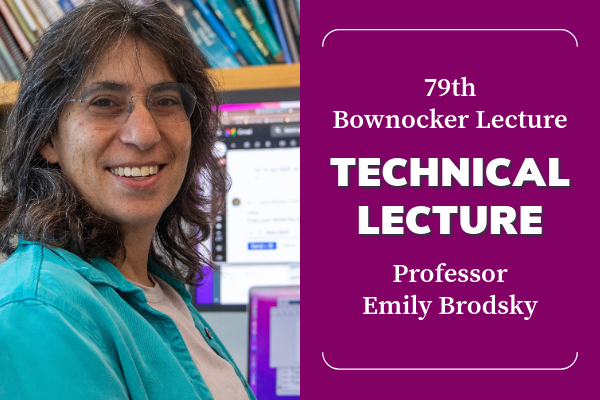
The variability of stress and what to do about it
Professor Emily Brodsky
Abstract: Stress is not uniform in the Earth. Even over relatively small volumes, pore pressure fluctuations, fault complexity, and lithological variations conspire to create a stress state that is difficult to describe with a single quantity. Given that any quantification of failure requires knowledge of the stress state, the lack of uniformity is a major problem limiting our knowledge of the initiation conditions of earthquakes, volcanic eruptions, landslides or any other geohazard that involves catastrophic collapse.
A route forward is to measure distribution of stresses in the Earth, rather than single values. Dynamic triggering and induced seismicity both provide information on the distribution of stresses required for failure. Fault roughness may also reflect the distribution of strength, which in turn affects in situ stresses. The probability of propagation along a fault rupture provides further information. Observations of all of these distributions are surprisingly robust and suggest some degree of self-organization in the Earth.
Heterogeneous stress results in qualitatively different behavior than uniform stress. Laboratory analog models with naturally evolving stress heterogeneity produce slip events with normal-stress independent of stress drops as observed in the Earth. Transient, spatially variable locking also emerges naturally in laboratory experiments if heterogeneity is allowed to occur. Stress heterogeneity also results in qualitative distinct features in nature. For instance, tremor synchronization in space seems to be limited by the activity of small, nearby crustal and intraslab earthquakes. This observation can be explained by a competition between the self-synchronization of fault segments and perturbation by regional earthquakes, which create a more heterogeneous field. The results imply previously unrecognized interactions across subduction systems, in which earthquake activity far from the fault influences whether it breaks in small or large segments.
In sum, the variability of the stress field is an inevitable, and in fact, tractable aspect of tectonic systems with non-trivial consequences for geohazards.
This event will be available in person and online via Zoom. To register for the online component, click here!
